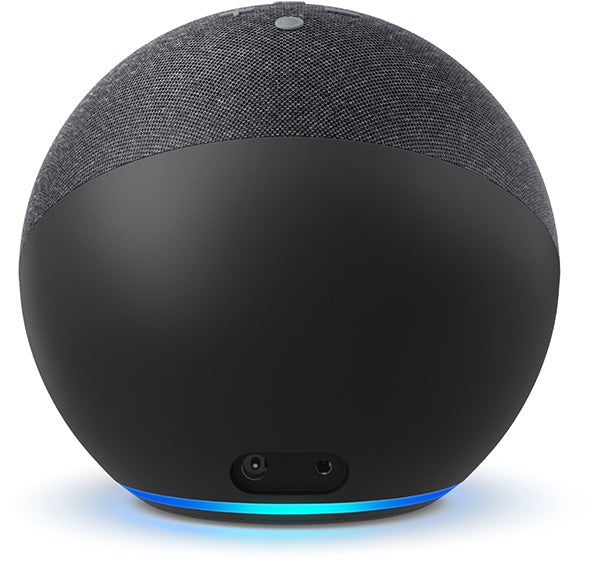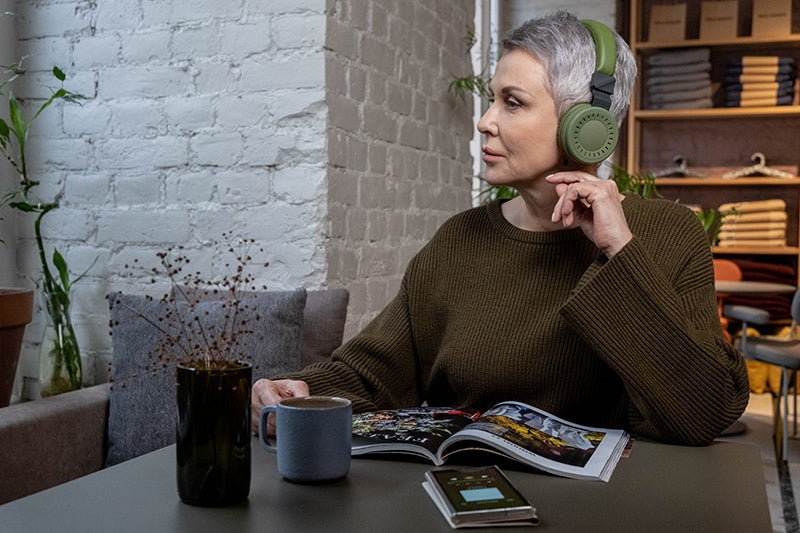In Part One (Issue 147) and Part Two (Issue 148), Russ looked at routing the audio from a computer through an external DAC for better sound, and using a third-party music management program, (in his case, Emby), to greatly increase the accessibility we have to music when stored on a NAS (network attached storage) or other drive, which can change the filenames of music tracks to make them harder to find). In this installment, Russ seeks out good values in streaming audio services for sampling future digital music purchases.
In researching further ways to get the most out of our computer-based music libraries, two things occurred to me: first, how wonderful it would be able to stream an audio service to my network that offers good value for money, and second, to be able to find a suitable piece of equipment that would allow you to have voice-activation control in accessing and playing music.
Rather than bore you with comparison tables which list all the various prices and streaming services available, I’ll just note that at the time of writing, one particular streaming service stands out for me both in terms of quality while also offering amazing value for money. If someone were to offer you a lossless streaming service, which also allowed you to download albums from a vast array of high-quality recordings so that you can play them off-line, would you be interested? You may feel that streaming is not really your preferred way of listening to music and that you would always rather play your backed-up music from your library. If you know what you like and don’t fancy the monthly or annual subscription fees of Amazon Music HD, Tidal, Roon, Spotify or others, that is completely understandable. I have felt that way for a long time.
As time has progressed, so has technology, and along with it I have begun to explore the wider field of what is on the table from digital streaming. Back in the day, I would budget myself a certain amount of cash each week for how many CDs and records I would go into the store and physically buy. This is where my current digital library of music now lives, in ripped digital form on an NAS. I thought this was quite advanced and modern until I subsequently discovered the Amazon Music Unlimited Single Device Plan.
(I need to state that I do not work for Amazon, am not an affiliate or a reseller of their products, and have no personal investment in their company, and this article is purely from a personal end-user perspective.) The Amazon Music Unlimited Single Device Plan gives subscribers access to streaming lossless music at Ultra HD standard to a single Echo, Echo Dot, Fire TV or similar device for free on their 90-day trial after which the service reverts to 96-320 kbps for the princely sum of £3.99 per month here in the UK and $3.99 for the USA. (That’s less than three quid in the UK!) If you then upgrade to their £7.99 per month tariff you gain their Ultra HD service (but you may also select the HD or standard options for playback within that tariff).
 Amazon Echo, one of a number of devices that is compatible with the Amazon Music Unlimited Single Device Plan.
Amazon Echo, one of a number of devices that is compatible with the Amazon Music Unlimited Single Device Plan.For me, I feel this represents a real sweet spot both in terms of accessibility to a huge library of streaming music, and at a high-enough quality of resolution that is competitive among its peers. Tidal, as a contrasting example, charges $9.99 for their 320kbps service. The Amazon Unlimited HD (High Definition) service plan allows access to 75 million songs at up to 850 Kbps, at 16-bit resolution and 44.1kHz (or CD-quality). As an alternative, Amazon Ultra HD offers 7 million songs at 3,730 Kbps, and 24-bit/192 kHz for $9.99 per month or $7.99 if you are an Amazon Prime member.
This is especially significant because as of March 2021, the HD offering is now included without the prior £5 GBP surcharge, which I believe was also retracted in the US, and makes for a fiercely competitive offering. (Note that these subscriptions replace your standard Prime music playing service, if you have one.) I also like the Amazon Unlimited service because many albums are of recordings made from original masters. Interestingly and by way of comparison, Tidal charges $19.99 for their 1,411 Kbps FLAC plan.
So, in short, if you are content to stream to only one Amazon device such as a basic Echo Dot, you can do so and connect it to your audio system’s auxiliary input, and then stream millions of albums, and under your very own voice command. I’m not suggesting you must be permanently content with this level of fidelity, but it is nonetheless exceptional in terms of the sheer diversity of music available for you to explore, and then purchase what you desire at whatever quality of resolution you prefer to listen to.
I like the value of the Amazon Unlimited streaming service because it offers you a wide panorama of music to sample for a reasonable price, whether entire albums or individual tracks. (We’ve all bought albums with duff songs on an otherwise pleasant collection of music!)
One example of an album I discovered and have enjoyed immensely for chilling out to is The Inner Urge by the band of the same name, released on March 25, 2018. The band includes by Alexander Price (guitar, violin) Michael Garbett (vibraphone, percussion) Andrew Koss (bass, synthesizer (and Jesse Griffith (drums). It’s a melodic jazz rock and ambient album with interesting synth sounds and playing, and relaxing soundscapes. It’s a great new musical discovery to relax to after a stressful day. The point is, though, that I would never have found it if it were not for the Amazon Music Unlimited service widening out my awareness to find something I now love to listen to. I’m confident you too can enjoy a similar experience and find new musical loves that you end up only wishing you had discovered sooner so that it could have been part of your musical diet for more years.
One caveat to be aware of with Amazon Music Unlimited is what actually constitutes a “download” or not in the conventional sense of the term. I always think of a download as something that sits on your hard drive somewhere after you’ve downloaded it. However, if you “download” an Amazon track to your PC’s desktop, what you actually get is a link to a file on the Amazon cloud server that enables you to play the track from the server – not a downloaded song that you then physically own. So, don’t spend any time looking for your music files buried in your PC, tablet or mobile phone’s music folder or similar, because it won’t be there.
At the time of writing this, downloads (in the traditional sense of the term which implies a physically present music file) are not available as part of the Amazon Unlimited or Amazon Prime services for PC or Mac. It’s not permitted to physically download to a local device due to licensing rights. Amazon customer service explained to me that for PC, any purchased downloaded music files must be played via another app. Your purchased files go by default into your My Music folder on your computer, where you then choose a suitable app to play the files. Windows Media Player is native to PC but does not sync your music file across different hardware such as your mobile devices or tablets. In other words, within the PC format, there is not a native music player that will synchronize and play that music file across different hardware devices.
The Mac system, however, does have a native app – iTunes, and it stores music in a normal music folder. iTunes links your downloaded track from its stored file location to the native player, and allows you to access the file from your iPhone or Apple tablet when using iTunes on those devices.
Although this may be common knowledge, what is less-known is that Amazon may be working on a native music player for PC to provide a similar synchronizing function. On pressing them further, they would neither confirm nor deny that this is in the pipeline, but it would seem to be a smart move that would popularize easier accessibility to Amazon-purchased music for PC owners wishing to access their music on additional devices. Perhaps it may be derived from their Music Installer app, but I guess we’ll have to wait and see.
So, no, you cannot truly download and “own” millions of songs for $3.99 per month, as some advertising terminology would lead you to believe. Perhaps I’m showing my age, but I don’t care. The benefits – good sound quality and easy access via voice command – far outweigh this.
You also get a generous 90-day trial period, which includes being able to try the service with multiple devices, but once you choose the Amazon Music Unlimited Single Device Plan, you have to settle on one single device for which you can use the service.
In a future issue we will examine some ways of accessing and playing our digital streamed music on a high-end audio system by using a tablet or phone and even via voice command, rather than needing a TV or monitor display, Enter the ride of the headless audio warrior!
For help regarding additional Amazon music services, please click on this link.
Header image courtesy of Pexels.com/cottonbro.


